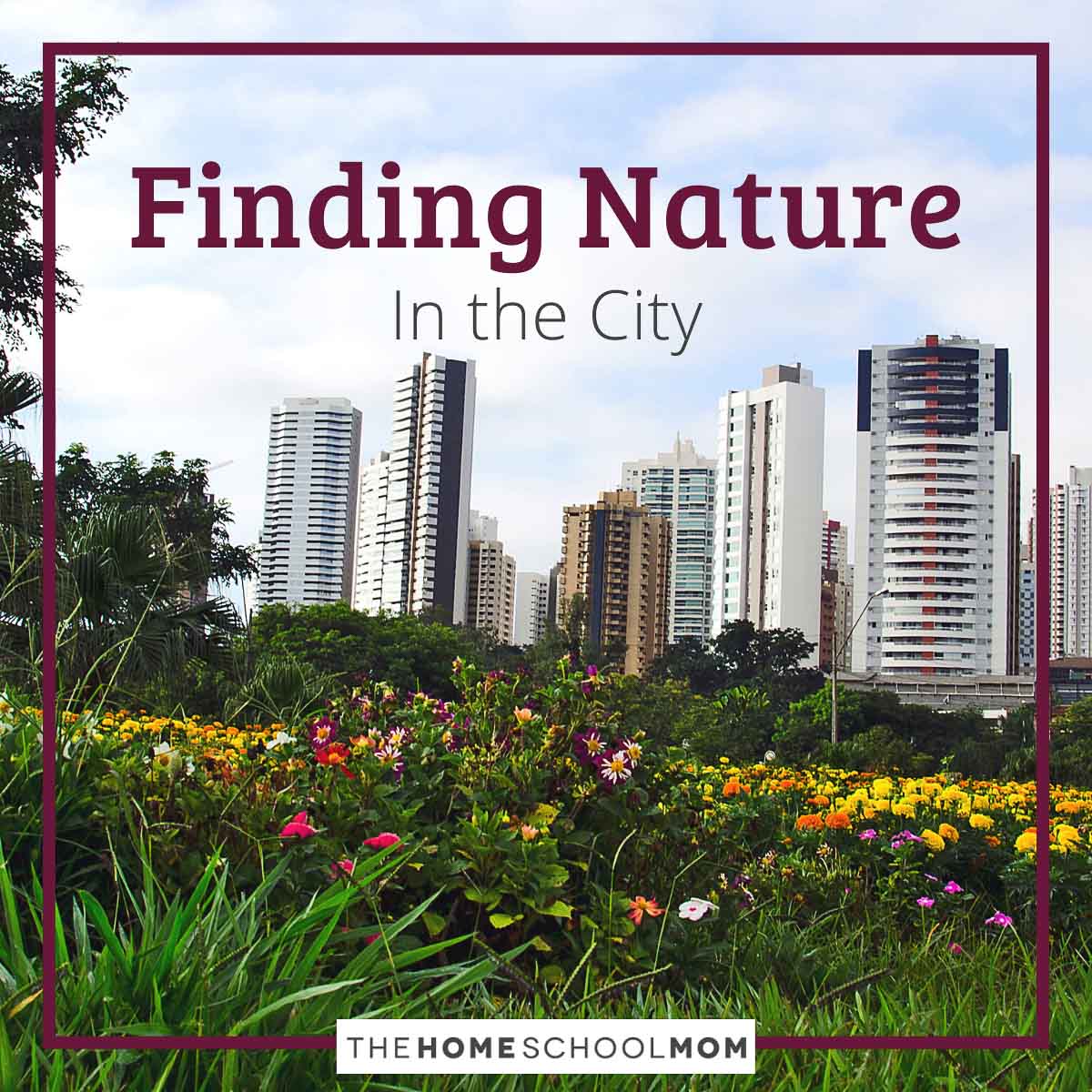This post is contributed by Oak Meadow, the sponsor of our Living Education series.
If you live in an urban area where nature is elusive, don't assume that there's no nature to be found!

First off, cultivate a healthy relationship with the sun. If there are few trees to offer a shade canopy, a hat is a good idea. If you are surrounded by pavement and cement, the sun's rays can reflect uncomfortably up as you walk.
If you start feeling uncomfortable in the glare or the heat, stop in shady spots along the way. If there is no shade, use an umbrella to carry some shade around with you.
Keep a nature journal with photos or sketchs. Go for a walk with your eyes wide open and see how many signs of nature you can "collect" along the way. Take photos or make sketches so that you will have a record and can try to identify plants, insects, and anything else once you are home.
Start with plants. Can you find bits of moss or stray plants growing in a sidewalk crack? Look up at the sides of buildings and out along fences, retaining walls, train tracks, etc.. What types of plants seem to like to grow in different places?
Did you know that weeds can have flowers, pods, or seeds? Review the life cycle of a plant and see if you can find plants at various stages of the life cycle.
One of the most impressive things about finding nature in urban settings is the number of plants that seem to be growing against all odds. What is the most unlikely place that you've found a plant surviving or even thriving?
See if you discover any rooftop or community gardens. What do you see growing there? Many city dwellers use containers to plant vegetables, herbs, flowers, and even tall trees. What can you find growing in containers in your city?
Is there a park, picnic area, or playground nearby with natural features? Can you tell which plants were placed there by humans and which ones moved in on their own? What are the clues that inform your answer?
Pay attention to the birds. There are often birds in urban areas. What might attract birds to your city? Where do you think they nest? Can you spot any nests? If you live in an area where birds are plentiful, consider making the most of your time outside by making your own bird unit study.
Look up! The sky and the clouds are part of nature. When it rains, what happens to the water? Go outside and trace its path from the roof to the storm drain. Where does it go from there?
Consider the water. Is there a river in your city? Are there any signs of nature in or around the river? Some urban rivers are polluted, but some have been cleaned up by thoughtful, committed citizens. How healthy is your city's river, if you have one? Learn about the water cycle.
Highlight the symbiotic nature of humans and nature. In what ways do humans intentionally help to encourage nature to grow and thrive in urban areas? And how do we unintentionally support certain kinds of plants or animals? What things could you and your family do to invite nature into your home life?
Identify your nature neighbors. While walking, did you encounter any plants or animals that you had never seen before? Look them up in field guides and get to know them! They are your neighbors, too. Next time you go outside and see them, you can identify them by name.
Get involved. Find out whether there are any groups or initiatives promoting nature in your city. You might be able to meet some people who are also interested in exploring nature in an urban setting.
How far would you need to travel to visit a nature preserve, public garden, or national park? What would you find there that you can or cannot find at home?
Nature exists all around us, sometimes against the odds or in surprising places. Even if you have no backyard and your neighborhood is more gray than green, chances are good that you can find a bit of nature to enjoy. Try it and let us know what you find!




 Enjoy these posts from the pages of Living Education, the seasonal journal from our contributing sponsor,
Enjoy these posts from the pages of Living Education, the seasonal journal from our contributing sponsor, 
Leave a Reply